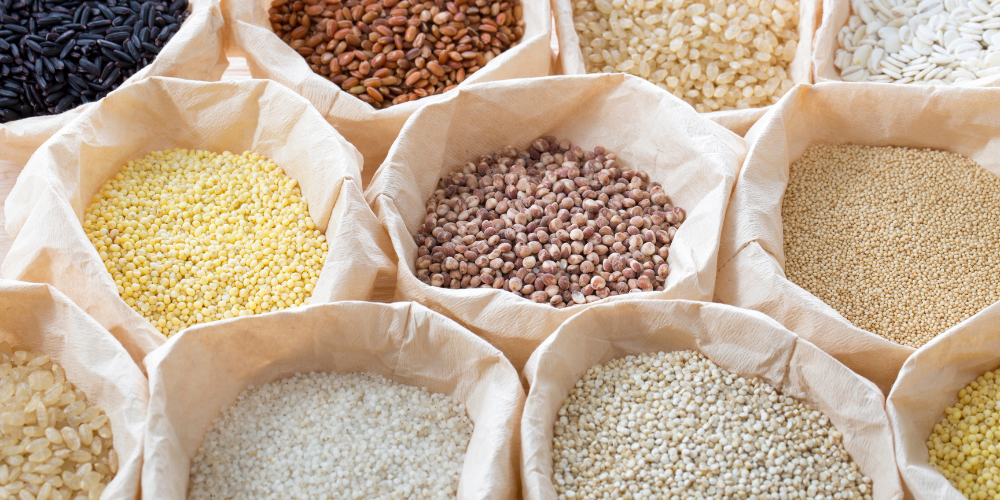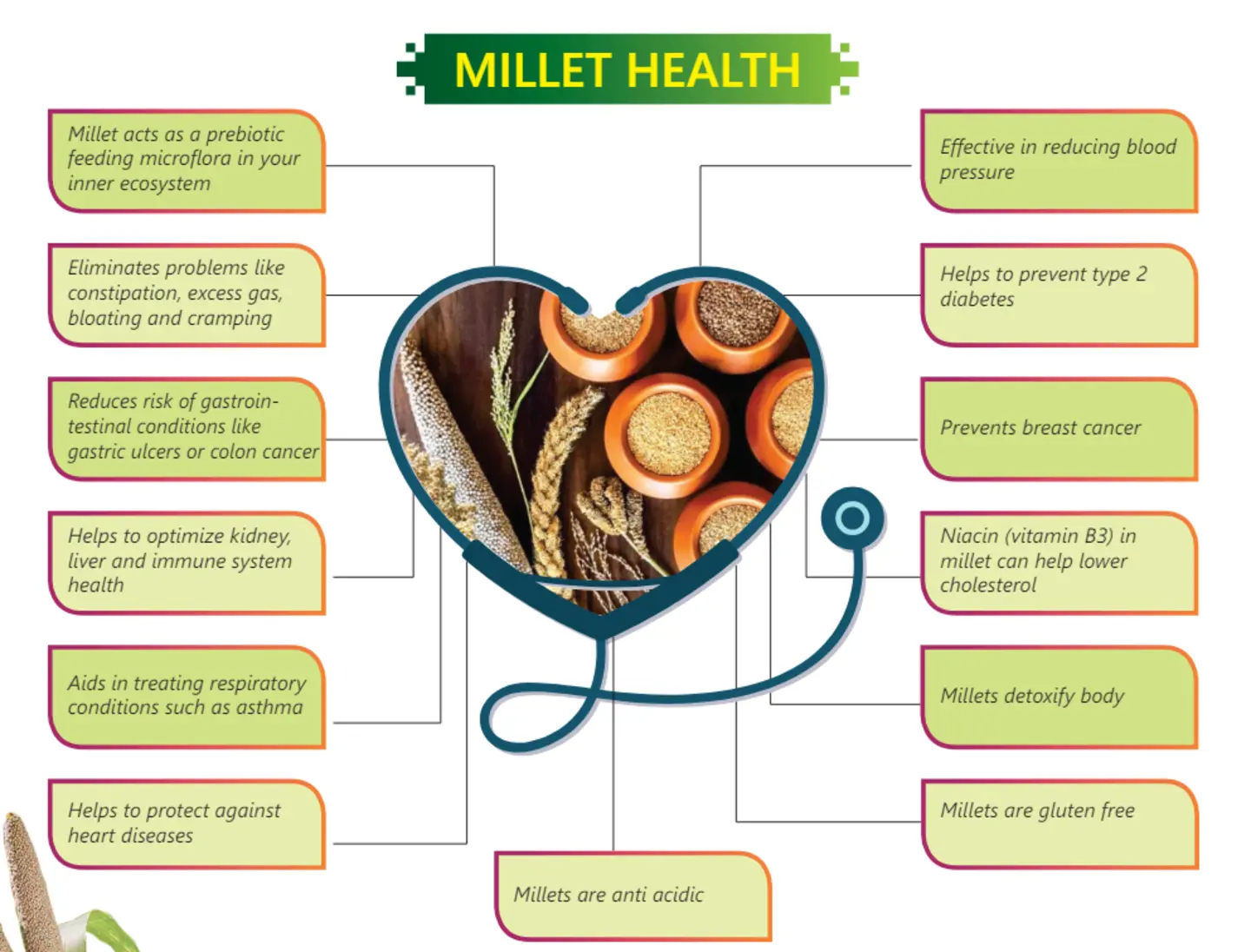Major & Minor Millets: Full Guide
Learn the difference between major and minor millets and how each type benefits your diet.
1. Introduction to Millets
Millets are small-seeded grains cultivated for thousands of years. They are highly nutritious, rich in fiber, protein, and essential minerals. Unlike refined grains, millets have a low glycemic index, making them an excellent choice for diabetics and weight management.

2. What Are Major and Minor Millets?

Millets are divided into two categories based on their cultivation and consumption levels:
- Major Millets: These include commonly consumed varieties such as pearl millet (bajra), sorghum (jowar), and finger millet (ragi).
- Minor Millets: These include foxtail millet, barnyard millet, kodo millet, and little millet, which are lesser-known but highly nutritious.
3. Nutritional Profile of Millets
|
Nutrient |
Amount per 100g |
|
Protein |
10-12g |
|
Fiber |
8-12g |
|
Carbohydrates |
65-75g |
|
Iron |
3-8mg |
|
Calcium |
10-30mg |
|
Magnesium |
40-90mg |

4. Health Benefits of Millets
- Supports Weight Loss: High in dietary fiber, millets keep you full longer and aid in appetite control.
- Regulates Blood Sugar: Their low glycemic index helps prevent sugar spikes, making them ideal for diabetics.
- Aids Digestion: High fiber content promotes a healthy gut and prevents constipation.
- Boosts Heart Health: Rich in antioxidants and healthy fats, they lower bad cholesterol levels.
- Enhances Immunity: Loaded with vitamins and minerals, millets strengthen the immune system.

5. Major Millets: Types and Uses
- Pearl Millet (Bajra): Used in making flatbreads, porridges, and energy bars.
- Sorghum (Jowar): Ideal for rotis, breakfast cereals, and gluten-free flour blends.
- Finger Millet (Ragi): Commonly used in baby food, porridges, and millet cakes.
6. Minor Millets: Types and Uses
- Foxtail Millet: Best for soups, salads, and pilafs.
- Barnyard Millet: A great rice substitute, ideal for porridges and upma.
- Kodo Millet: Perfect for dosa, idli, and millet-based bread.

7. How to Cook Millets Correctly?
- Soak Millets for 6-8 hours to reduce cooking time and enhance nutrient absorption.
- Rinse Thoroughly to remove anti-nutrients.
- Cook in a 1:2 Ratio (1 cup millet: 2 cups water) for a fluffy texture.
8. Millets vs. Other Grains: A Comparison
|
Grain |
Protein |
Fiber |
Glycemic Index |
|
Millet |
High |
High |
Low |
|
Rice |
Low |
Low |
High |
|
Wheat |
Moderate |
Moderate |
Medium |
9. Why Millets Are a Sustainable Crop?

- Require minimal water.
- Grow in poor soil conditions.
- Have a short cultivation cycle, making them environmentally friendly.
10. Millets in Traditional and Modern Diets
Traditionally, millet-based dishes like porridge and flatbreads were staples. Today, they are used in healthy snacks, breakfast cereals, and plant-based diets.
11. Best Recipes with Millets
- Millet Khichdi
- Ragi Pancakes
- Foxtail Millet Salad
- Barnyard Millet Porridge
12. Common Myths About Millets Debunked
- Myth: Millets are difficult to cook.
- Fact: They are easy to cook and require minimal preparation.
13. How to Incorporate Millets into Daily Meals?
- Replace rice with millet in meals.
- Use millet flour for baking bread and cakes.
- Add cooked millet to salads and soups.
14. FAQs About Millets
1. Are millets gluten-free?
Yes, all millets are naturally gluten-free.
2. Can diabetics eat millets?
Yes, millets have a low glycemic index, making them diabetes-friendly.
3. How often should one eat millets?
Including millets 3-4 times a week is highly beneficial.
4. Do millets help with weight loss?
Yes, their high fiber content promotes satiety and aids in weight management.
5. Can millets replace rice?
Absolutely! Millets are a great alternative to rice and wheat.
6. Are millets good for kids?
Yes, millets provide essential nutrients for growth and development.
15. Conclusion
Millets are a superfood that supports weight management, heart health, and diabetes control. Adding millets to your diet ensures better nutrition and sustainability.



